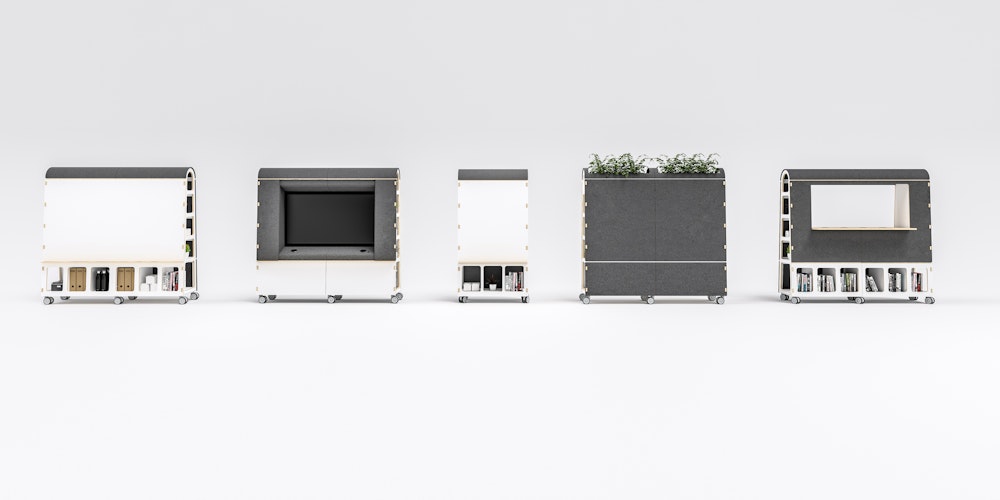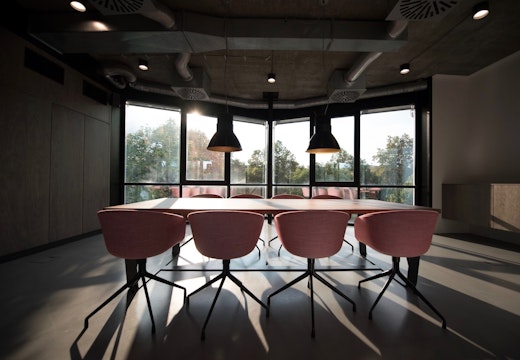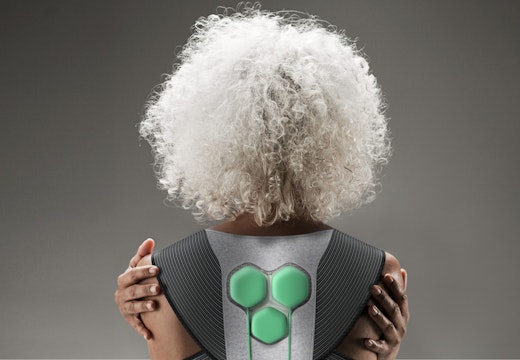Tracing the Arc of mobile furniture to bring back the human touch
In the search for workspace efficiency, have we gone too far in removing personal control and a sense of belonging? Flexible new furniture developed by Task Systems seeks to redress the balance
In the drive to make workplace interiors more efficient, are we sacrificing a sense of belonging for people? That is the question confronting workplace strategists and designers as more and more large companies reduce levels of personalisation and privacy while optimising space efficiency.
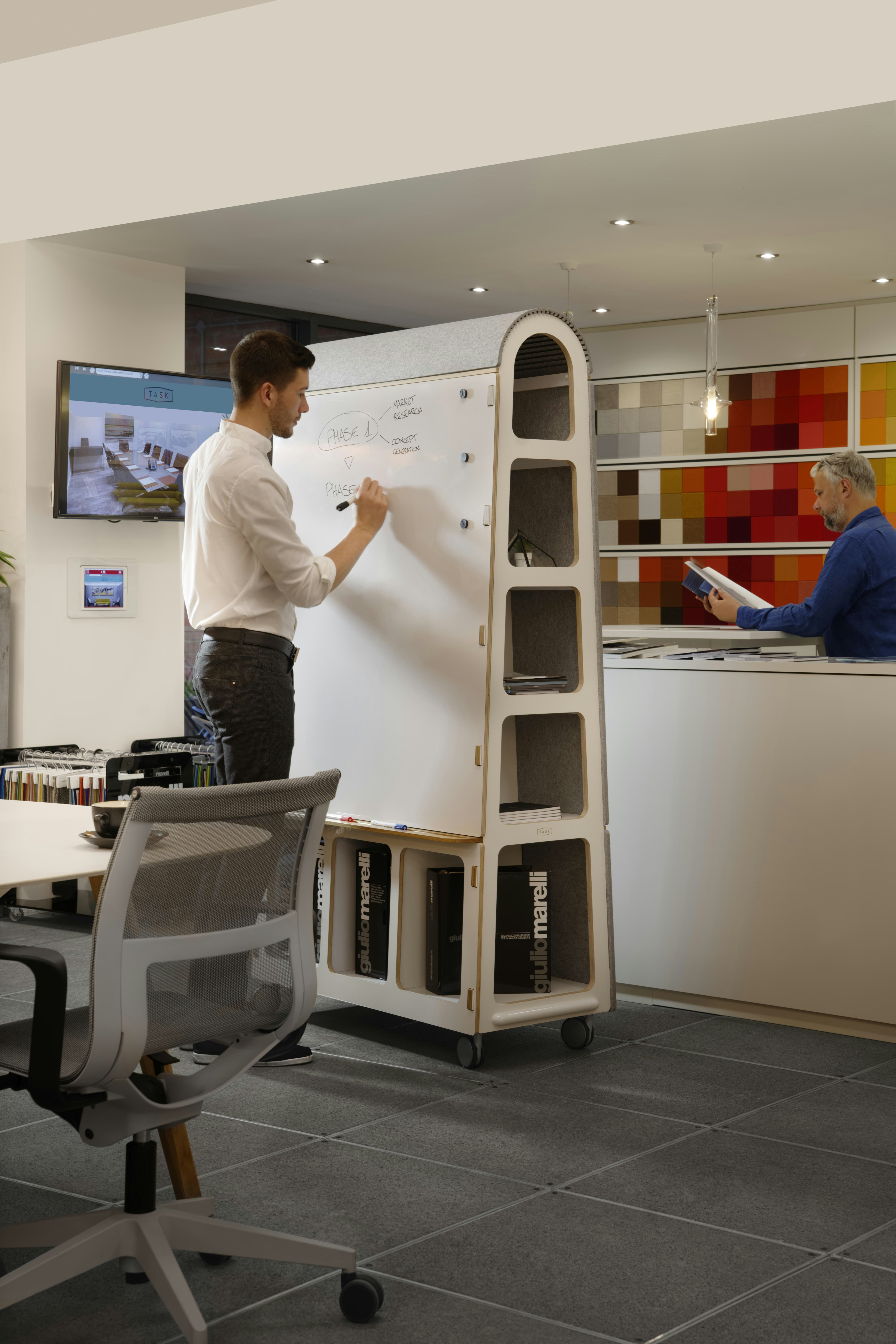
The Arc gives the office back to the employees
Many experts now recognise that the scales are tilting in the wrong direction. While it is important to manage space tightly, a lack of personal autonomy and control can lead to lower levels of employee satisfaction if unchecked. ‘Efficient’ environments can also create a sterile, clinical feel in which no personalisation is allowed, leaving people dissatisfied with their space.
Independent UK manufacturer Task Systems has set about finding a better balance in which a high-efficiency approach is combined with a more human touch. The solution can be found in a new furniture range called Arc, that comprises a flexible and mobile set of loose-fit interior components handing back some elements of personalisation and choice to the individual office worker. As Task’s Fergus Bowen comments,’ You control the environment, the environment doesn’t control you.’
Responding to human needs
The fast-track development of the multi-functional Arc range began in 2016 with a design workshop convened on behalf of a large management consultant client. Product designer Craig Jones of Jones & Partners worked with the Task Systems team to sketch out ideas in response to human needs.
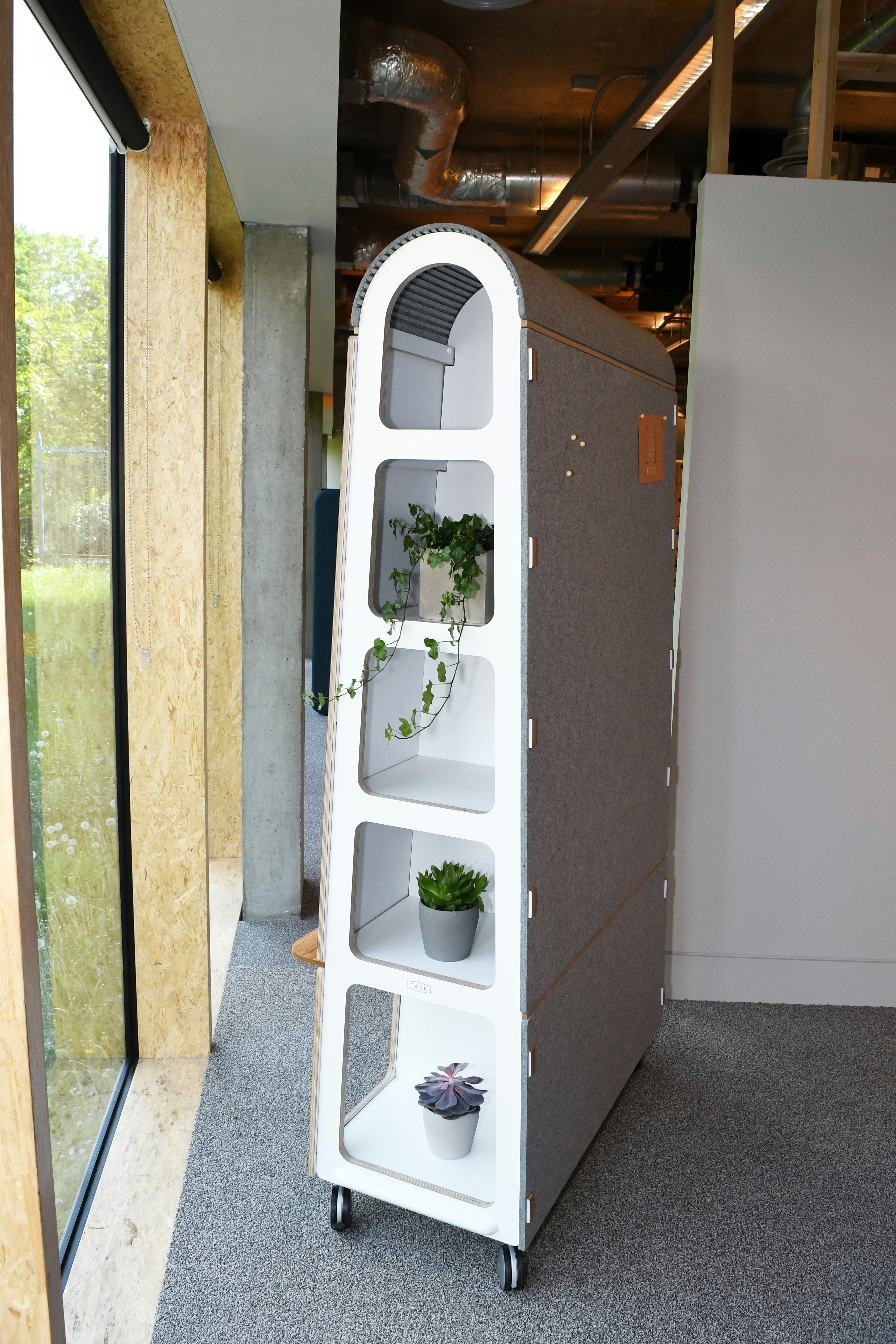
Acts as a room divider which can include book shelves, plants, coat-hooks, pin-up and writing walls
A versatile new product swiftly emerged, a tall, distinctive unit that could be wheeled into place to act as a room divider incorporating book shelves, plants, coat-hooks, pin-up and writing walls, and digital screens. Within eight months, Arc prototypes were tested, first in Craig Jones’ own studio and then on three floors of the client’s new building.
Feedback from the early pilots were encouraging. Arc not only broke up expanses of open plan space – providing more private areas and supporting personalisation – but also supported the more fluid patterns of agile and activity-based working. The ability to write on walls in a project environment was particularly appreciated. So was the function of the tall objects as wayfinding objects to aid navigation in the office.
Capturing the imagination
Made in the UK of plywood with a metal base, whiteboard and an acoustic panel material called Autex, Arc rapidly caught the imagination of users as furniture that can be adapted locally by employees without bringing in the facilities management team.
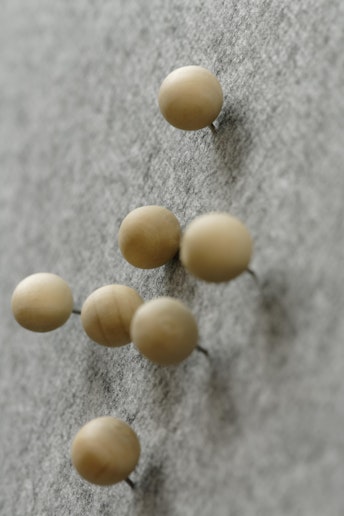
The range was developed from the original one-metre-wide version to include a two-metre-wide unit with a battery-powered digital screen; the theme was further extended with an integral and adaptable Arc table and bench to work with the system. Development was guided by an over-arching ethos to give people more control over their environment, using a kit-of-parts approach akin to building a theatre set in the office.
Indeed, the informality and immediacy of the Arc range reflects wider trends in office furniture towards versatility in use rather than longevity for its own sake. As product cycles shorten, so workplace design is seeking to balance business efficiency with the psychological comfort and wellbeing of employees.
Open-minded to innovation
It is tricky balance but Arc is gaining ground as a practical solution. After a successful pilot in which more than 100 pieces of furniture were specified, other major occupiers such as JP Morgan Chase, Maersk and the British Heart Foundation have become Task customers for this novel range.
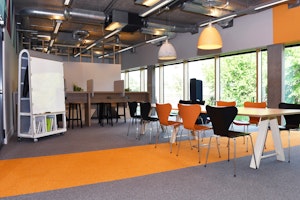
Arc furniture in situ in meeting area as aid to collaboration
Task Systems is in no doubt that furniture developments like these represent the future ‘The trend now is towards a more eclectic mix in furniture, away from streamlined efficiency,’ explains Fergus Bowen. ‘People respond well to visual stimuli rather than minimalism.’
To see a film about the project, click here

